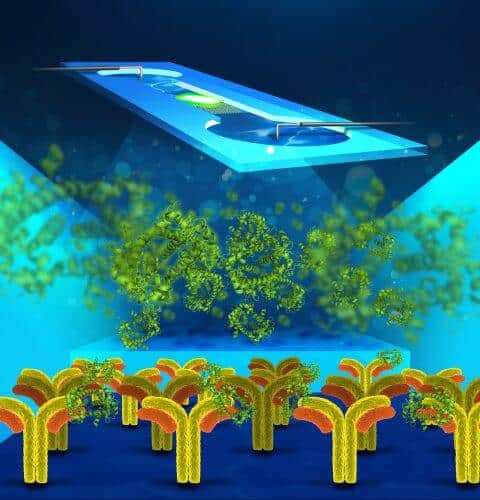The device, developed by researchers from the Technion and IBM, will allow accurate results in a few minutes, based on a tiny sample such as a drop of blood

Researchers at the Technion and the IBM research center in Zurich have developed an innovative device that enables the diagnosis of proteins with a sensitivity more than 1,000 times higher than that of existing methods. This is what the journal reports Analytical Chemistry, who chose this study for the cover story.
The main author of the article, Federico Paratore, conducted the research as part of his doctoral thesis under the guidance of Associate Professor Moran Berkowitz from the Faculty of Mechanical Engineering at the Technion and Dr. Govind Kaigala from the IBM Research Center in Zurich.
The new device is designed to monitor proteins that are biological markers (biomarkers), i.e. biological molecules that warn of the formation of a disease in the body. Protein monitoring is now an essential tool in medical diagnosis - from malaria diagnosis, through the detection of cardiological events, to the diagnosis and monitoring of cancerous tumors.
The big challenge in this field is the monitoring of the relevant biological markers in the early stage of the disease, when these markers are still not numerous. This is because an early diagnosis significantly increases the chances of recovery and in the case of serious diseases also improves the chances of survival.
The greatness of the new technology lies in its high sensitivity, which enables the identification of biological markers at an early stage of the disease, when their frequency in the sample is still very low. The technology is based on relatively simple hardware - a microfluidic chip containing flow channels the thickness of a hair. It heralds a new type of simple, small and relatively cheap diagnostic devices that will replace the sophisticated and expensive equipment used for this purpose today. These devices will make it possible to perform an early diagnosis based on extremely small samples, such as a drop of blood.
According to Prof. Mishna Berkowitz, Head the laboratory For microflow technologies at the Technion, "we use an old method of increasing concentrations called isothophoresis (ITP), but in a different way than usual. Using a combination of electric fields and unique chemistry, we concentrate proteins from the sample into a tiny volume, and produce a reaction between them and antibodies that are on the surface of the microchannels. The response is enhanced due to the high local concentration, and can be measured using a standard detector."
"In fact we are deceiving the detector," adds Ph. D. Pretora. "We expose it to a concentration 10,000 times greater than the concentration in the original sample and thus increase its sensitivity."
It demonstrates the simplicity of the test: a few drops of sample are inserted into the microfluidic chip and then the electric field is applied. The proteins are compressed into a minimal volume of about 50 picoliters - about a millionth of the volume of a tear - and the results are obtained in a few minutes.
Watch: an animated video of the process
Pretora, who completed a bachelor's and master's degree at the University of Spaenza in Rome, is paying for a doctor's degree as part of Virtual Vials - a project funded by the European Union. Together with him, the two supervisors and the doctoral students Tal Zeidman Kalman and Tali Rosenfeld from Prof. Mishna Berkovitch's laboratory sign the article.
Dr. Govind Gaikla, a scientist at the IBM research center in Zurich, adds that "the elegance of this approach lies in its simplicity and, of course, in the dramatic increase in the sensitivity of the device. This method can be applied in many diagnostic systems and we estimate that it will reduce the existing limitations in medical diagnosis and will be used in testing biological samples of blood, saliva, urine and more."
The startup company Tislia recently acquired the rights to use the technology, and is using it to develop advanced medical diagnostic capabilities.
See more on the subject on the science website:
